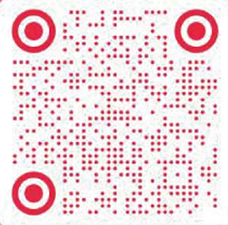People with expectations of themselves in regards to art history seem never to become fully-devoted painters of lust.
We see similar signs in Wei Dong’s twenty year career. He has said that “desire is the primal impetus in my paintings,” and has always been obsessed with degenerative depictions of the female body, but has also shown the tendency to turn La Maja Desnudo into La Maja Vestida, clothing them in signs of sociological import which are stacked, layer after layer, onto the painting. He did not begin to strip them away until recently.
In the early 1990s, Wei Dong created an astonishing personal style in paper and colored ink, juxtaposing wanton female forms against Ming dynasty landscape backgrounds to create a powerful sense of discord and conflict in the painted space. This could be understood as the distorted landscape of Chinese society after 1989 and the rise of consumerism, a Surrealist garden, a hell on earth a la Hieronymus Bosch, one that also encapsulates a “secret love” for ancient pastoral odes or the literati life, as well as a more direct goal—subversive imagining of the Mao Era.
The modernist “ugliness” movement seems to have succeeded in the West, but in the Chinese art environment of the 1990s, it was still a radical adventure aimed at surpassing Pop art’s ability to accept and understand, and Wei Dong was the most extreme and proactive practitioner on this adventure. “Kitsch” is his key word, the crux of his personalization of tradition. It was through this that he became a true outcast. On this matter, American critic Robert C. Morgan in 2006 called Wei Dong the “most important and most controversial” Chinese contemporary artist of the past twenty years. These words of praise may have held a bit of habitual Western political voyeurism, but they at least demonstrate that Wei Dong’s visual allegories are not crude, simple ideological diagrams.
Then, in relation to the rapidly changing context of reality, a certain corresponding adjustment in style began to emerge following his immigration to the United States. Once there, he began continuing his “adventures in ugliness.” That unchanging female lead began to tone down her role as a stand-in for authoritarianism, instead becoming an “exposer.” She stands there under ambush and attack, appearing innocent and lonely, like a sacrifice in a repressed environment and system. Correspondingly, her naked flesh should be understood as the manifestation of Eve-like hopes, radiating with the halo of human nature.
We can see that the shadows of local memory continued to follow this person who left, but at the same time, objective distance was pushing him to reflect on where he could find a sense of escape. What matters is that not only has he realized that sociological significance has held back the aspirations of the painted subject, but he has also realized that the pursuit of lust itself can, within a reserved, solid structure, take on more profound tension. This is also the reason why his recent works have changed yet again. In the past two years, his works have grown smaller in size, almost small enough to fit in the palm of your hand. The subject matter is often indoors, tranquil spaces filled with the air of everyday life rather than politicized cages. The female forms have gone from exaggerated poses to that sense of stagnation from the Flemish tradition. The confining sociological clothes he once forced on them have disappeared, and their skin seems to have regained its shine after the healing of their wounds. They are beginning to be restored to a more innocent lusty gaze.
This perhaps truly approaches Wei Dong’s expectations of himself. If his earlier expressions were an externalization of a deformed reality, his current artworks are like a diary written in a code of lust. In this diary, the adventures in ugliness have not ended, but instead focused on desire itself in a more secret manner.
—— Curator Zhu Zhu











